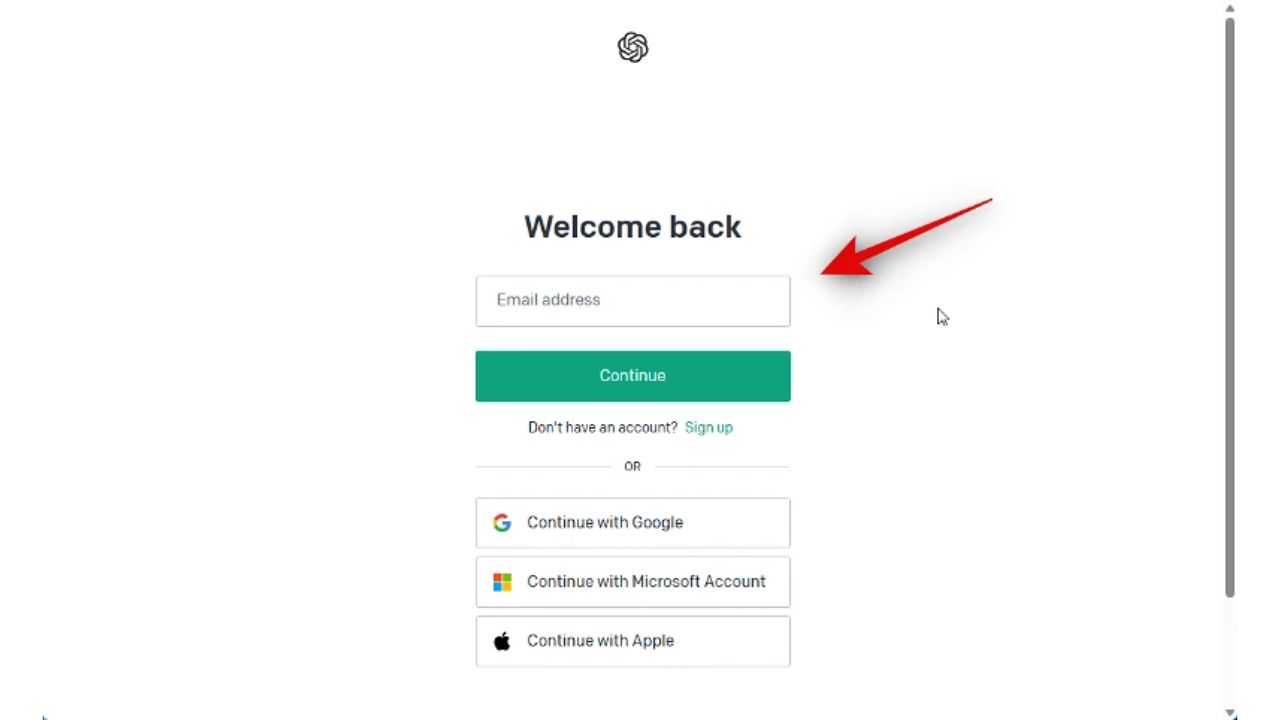How to Convert a Video to Document With ChatGPT: ChatGPT has come a long way since it was first made available to the public, and GPT-4’s support for third-party plug-ins has helped introduce a plethora of innovative uses for AI. However, this is not the only method to maximise ChatGPT’s free version; there are a plethora of community-developed open-source tools available that can help you do much more with ChatGPT.
Using Vlog, a tool that converts documents to videos that can then be discussed with ChatGPT, is one method to achieve this. This is the ideal instrument for you if you wish to transcribe, articulate, or discuss videos with an AI. Here’s how to use Vlog to convert a video to a document and ChatGPT to discuss the same topic.
Why should a video be converted to a document for use with ChatGPT?
Converting a video to a document offers several advantages. Using Vlog, you can construct a detailed description of the provided video, which ChatGPT can then analyse for various outcomes. You can generate summaries, hypotheses, and descriptions of the video’s various segments, as well as analyse concealed details and do much more. Vlog is a GitHub-hosted, community-developed application that employs pre-trained models, including BLIP2, GRIT, and Whisper.
GRIT is used to analyse the environment, while BLIP2 is used to analyse video images. Whisper, on the other hand, is used to verify and analyse the audio in a video and generate the document accordingly. These models have already been trained, and the entire project can be downloaded from GitHub. You can use the developer’s HuggingFace demo to test and evaluate the capabilities of Vlog.
How to remove URL:MAL pop-up virus: Protecting Your System (newsd.in)
Two methods for converting a video to a document using ChatGPT.
You can either test the demo version hosted on HugggingFace, or you can install it locally on your computer. There are a few prerequisites for installing it locally on your PC, but we will walk you through the entire process. Once installed locally, Vlog can assist you in converting your video into a comprehensive document, which you can then input to ChatGPT in order to assist in its analysis and discussion. Follow the preferred procedure outlined below to use Vlog on your computer.
Method 1: Demonstrate HuggingFace
If you want to test the capabilities of Vlog without installing it on your PC, you can use the HuggingFace Demo, which allows you to view a collection of pre-uploaded videos. The instructions below will assist you with this procedure. Let’s get begun.
Check out platform.openai.com. Now log into your OpenAI account using one of the presented options.
After logging in, select your profile icon in the upper-right corner of the screen.
Select View API credentials.
Click + Create a new secret key now.
Specify the API key as preferred. We recommend selecting a name that facilitates future identification of the key. In this guide, we shall identify the Vlog key evaluation.
After naming the file, select Create secret key.
Your account will now receive a fresh API key. Click the transfer icon next to the key to transfer it to your clipboard.
Visit huggingface.co/spaces/TencentARC/VLog once the URL has been copied. This is a demo of HuggingFace for Vlog. Now paste the copied key into the text field titled Input OpenAI API key in the upper right corner and press Enter.
As suggested, press Enter once the key has been pasted.
The key will now be submitted, and if all goes well, the message OpenAI key submitted successfully should appear.
Next, select an example video to convert from the Examples section on the right.
The video will now appear to the left of video_input.
To convert the video to a document, click Generate Video Document.
A document will now be generated for your video and sent to ChatGPT automatically.
After that, type your question into the Chatbot box and select Enter. As the Big Bang Theory video was used to create this guide, let’s see if ChatGPT can help us identify the names mentioned in the video. Therefore, we pose the following query.
“List all names mentioned in the video”
A time approximation will be displayed in the upper-right corner of the screen once you submit your query to ChatGPT. When the procedure is complete, a valid response, which in our case is the following, will be displayed.
And this is how you can utilise the HuggingFace-hosted Vlog demo to evaluate the capabilities of the application.
Method 2: Install Vlog locally and evaluate your video.
Here are the steps necessary to install and configure Vlog on your computer. This guide utilises Ubuntu, but the steps should be comparable on other platforms. The procedures listed below will assist you with the process.
Note: Unless you’re prepared to troubleshoot the installation of delectron2, you should avoid using Vlog on Windows at this time. This is a Facebook image recognition tool used by Vlog to identify elements in your video; Windows support is presently unofficial.
Requirements
An Nvidia GPU with the most recent Linux drivers (strongly recommended).
Once you meet these requirements, you can establish and use Vlog by following the steps below.
Step 1: Install Git
We must first install Git on your computer. Follow the instructions below to install Git on your Windows computer.
In certain instances, Git may already be installed on your Linux computer. Launch the Terminal on Ubuntu by selecting Ctrl + Alt + T and enter the following command to determine if Git is installed: git -vvv.
git --version
If you’re informed of the relevant version number then Git is already installed. However, if you get a similar message to the one below, then you can use the following command to first install updates.
sudo apt update
Type in your password once you’re prompted.
Now use the following command to get and install Git.
sudo apt install git
Your operating system will now request permission to install the required dependencies. Enter y followed by Enter.
Git is currently being downloaded and installed on your computer. Depending on the network bandwidth available, this may take some time. Upon completion, use the command below to verify that everything has been configured properly. If everything is functioning as intended, you should receive the currently installed Git version number.
git --version
And that’s it! We can now download and set up the other necessary dependencies on your PC.
Step 2: Install Wget
Now we must install Wget. This will enable us install Python 3.8 and the Vlog-required pre-trained model. The procedures listed below will assist you with the process.
Launch Terminal on your system. If you are using Ubuntu, you can do this by typing Ctrl + Alt + T. Use the following command to determine if Wget is already installed on your computer.
wget --version
If Wget is already installed then you will be shown information about it, else you can use the command below to install it on your PC.
sudo apt install wget
Type in your password when you’re prompted.
Wget will now be installed on your PC. As you can see it was already present at my end which is why nothing new has been installed.
And that’s it! We can now install Python 3.8 using the next step on your PC.
Step 3: Install Python 3.8
We now need to install Python 3.8. Wget will help us with this process. Follow these steps to install Python 3.8.
Open Terminal on your PC. If you’re on Ubuntu, you can use the Ctrl + Alt + T keyboard shortcut. Once launched, use the following command to check and update all packages.
sudo apt update
Type in your password when you’re prompted.
Now use the following command to install the necessary dependencies.
sudo apt install build-essential zlib1g-dev libncurses5-dev libgdbm-dev libnss3-dev libssl-dev libsqlite3-dev libreadline-dev libffi-dev libbz2-dev
The necessary dependencies will now be installed. Press y and then Enter once you’re prompted.
This process will take some time depending on the available network bandwidth.
Once everything is installed, use this command to download the Python 3.8 package.
wget
The Python release will now be downloaded on your PC. Once done, use the following command to extract the package.
tar -xf Python-3.8.0.tg
Now navigate to the extracted directory using the following command.
cd Python-3.8.0
Once done, use the following command to check and verify whether everything is set up as intended on your PC.
./configure --enable-optimizations
Once the process is completed, use the following command to initiate the build process. Replace [Count] with the number of CPU cores available on your PC.
make -j [Count]
Depending on the available resources on your computer, the compile procedure will also take time. Once the compilation is complete, use the command below to install it on your computer.
sudo make altinstall
Once the process has been completed, use the following command to check if everything is working as intended.
python3.8 --version
You can now use the following command to close the Terminal on your PC.
exit
And that’s it! We can now proceed with the next step of installing and setting up Anaconda on your PC.
Step 4: Install Anaconda
Here’s how you can install Anaconda on your PC. Follow these steps to help you along with the process.
First, navigate to your Downloads folder using the following command.
cd ~/Downloads
Open Terminal on your computer by pressing Ctrl + Alt + T. Now download curl using the command below. Enter your password when prompted to do so.
sudo apt install curl
Next, use the following command to download the Anaconda installation script.
curl -o Anaconda.sh
The script will now be downloaded in the Downloads folder. This can take some time depending on your network speed.
Once the process has been completed, use the following command to run the installation script.
bash ./Anaconda.sh
Now press Enter to proceed as instructed.
Press Enter repeatedly until you are prompted to type agree. Enter this text and press Enter.
Enter to install Anaconda in the default location. You can also specify an alternate location if necessary. To initialise Anaconda after installation is complete, type yes and press Enter.
Now, Anaconda will be initiated. Now, we must include Anaconda in your path variables. Use the command below to achieve the same result.
nano ~/.bashrc
Now use the following command to add Anaconda to path variables. Replace [Path] with the location where you installed Anaconda. If you installed it in the same location, you can use this path “/home/[username]/anaconda3″. Ensure you replace [username] with your username on your PC.
export PATH='$PATH:[Path]/bin'
Once you’re done, press Ctrl + O on your keyboard. Press Enter once the default file path shows up.
Now press Ctrl + X.
And that’s it! We’re now ready to set up and use Vlog on your PC.
Step 5: Setup Vlog
Now that everything has been installed and configured, we can configure and utilise Vlog on your computer. The procedures listed below will assist you with the process.
Open Terminal on your computer by pressing Ctrl + Alt + T. Once opened, use the following command to momentarily deactivate Anaconda.
conda deactivate
Now navigate to your downloads directory using the following command.
cd ~/Downloads
Next, use the command to clone Vlog in your Downloads.
git clone
Once the project is cloned, use the following command to navigate to its directory.
cd Vlog
Next, use this command to create a new directory named checkpoints.
mkdir checkpoints
Now navigate to the same directory using the following command.
cd checkpoints
We can finally download the pre-trained model. Use this command to download the pre-trained model.
wget -c
Wait for the model to download. This process can take some time depending on your current network speed and available bandwidth.
Once the process has been completed, use the following command to go to the Vlog directory in your Downloads folder again.
cd ~/Downloads/Vlog
We now need to activate Anaconda again. Use the following command to do the same on your PC.
conda activate
Once activated, you will see (base) in the next line. You should still be in the Vlog directory. Now use this command to create a new environment.
conda create -n vlog python=3.8
Now press y when you’re prompted to confirm your choice.
A new environment will now be created. Activate the newly created environment using the following command.
conda activate vlog
Once activated, the same will show up in the next line. Now use the following command to install the necessary dependencies.
pip install -r requirements.txt
Now, all prerequisites will be installed. Delectron2 is one of the dependencies, and it is a relatively substantial file, along with other dependencies such as pytorch and others.
Note: If you are experiencing exceedingly slow download speeds, run “conda update -n base conda-package-handling” and retry. This will assist in resolving download performance issues, particularly with Pytorch. In addition, pip may acquire multiple versions of various tools in order to determine which ones meet other requirements. This is normal, and the procedure should not be interrupted.
Once the process has been completed, you should see something like this.
You can now use this command to close the terminal.
exit
And that’s it! We’re now ready to convert our video to a document so it can be used with ChatGPT.
How to Make ChatGPT Continue Writing: Unleashing ChatGPT’s Potential
Step 6: Use Vlog to generate the document
We must first obtain your Open API key in order to use it with Vlog. The procedures listed below will assist you with the process.
Launch a web browser and navigate to platform.openai.com. Use your preferred method to log in to your account.
Click your profile’s icon in the upper-right corner.
Select View API credentials.
Click + Create a new secret key now.
Give your API key a name that is readily recognisable. In this guide, we will refer to it as the Vlog key test.
Click Create secret key when finished.
After the key has been generated, select the copy icon next to it. Do not dismiss the tab or dialogue box, as the key will no longer be visible. Alternatively, you can record the key in a convenient location.
Once the text has been copied, open the Terminal by selecting Ctrl + Alt + T. Use the following command to activate the Vlog environment created in the preceding phase.
conda activate vlog
Once activated, navigate to your Vlog directory we created in the Downloads folder earlier using the following command.
cd ~/Downloads/Vlog
Now type in the following. Replace [Key] with the OpenAI key we generated earlier and [Path] with the path to the video you wish to convert. Vlog comes with an example video in the examples folder, so we’ll simply use that for this example.
python main.py --video_path [Path] --openai_api_key [key]
Once you’re done, press Enter.
Ensure that your video’s name does not contain any spaces. If so, we recommend renaming the file before attempting to execute the above command.
Your video is being processed and converted into a document at this time. Depending on your network pace and available resources, this may take some time.
Once the conversion is complete, the converted file will be stored in the same folder as your video.Thus, using Vlog, you can convert a video to a document.
Step 7: Use the document with ChatGPT
As discussed above the converted document will now be available in the same directory as your video. If you tinker with Vlog a bit, you should also be able to chat with ChatGPT directly in the terminal. For now, let’s take a look at how you can use this converted document to feed to ChatGPT in the future so you can continue discussing the video.
Open chat.openai.com in your browser and log into your account if needed.
Once logged in, copy and paste the contents of the converted video document followed by your query and press Enter. Let’s ask ChatGPT to summarize the video for this example.
As you can see ChatGPT has summarized the video along with dialog translations.
And that’s it! Every time you need information from the video in the future, you can simply feed ChatGPT this document instead of having to convert it over and over again on your PC locally.
We hope this post helped you easily convert a video to a document to use with ChatGPT. If you face any issues or have any more questions, feel free to reach out to us using the comments below.


















